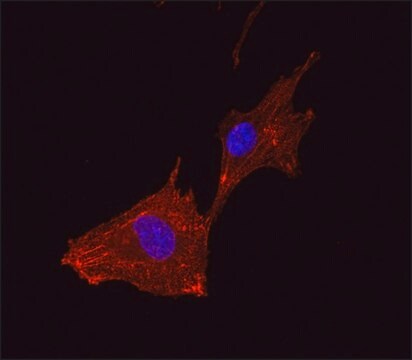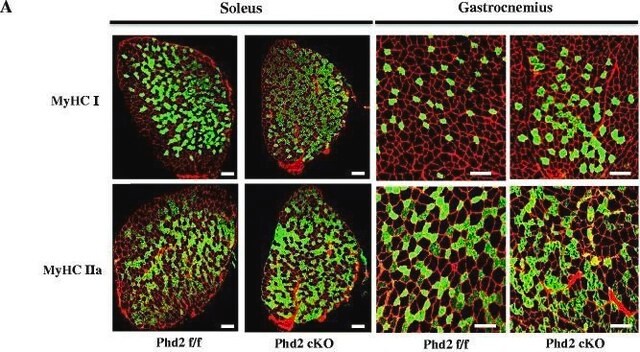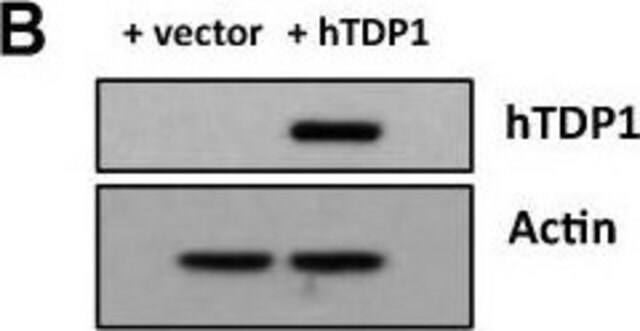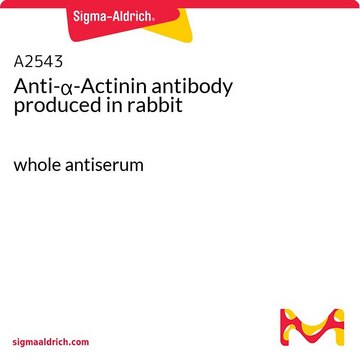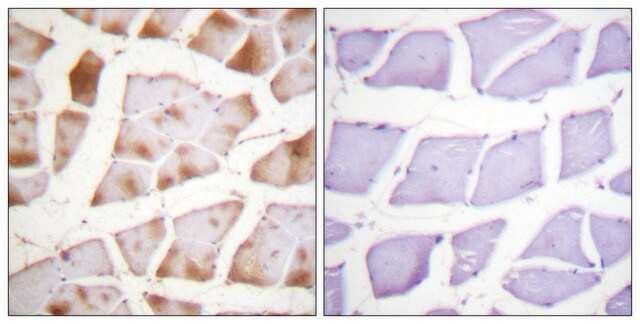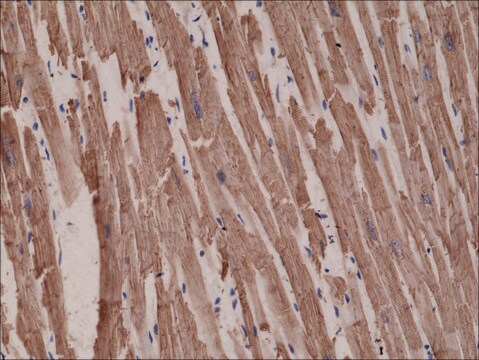A2172
Monoclonal Anti-Actin (α-Sarcomeric) antibody produced in mouse
clone 5C5, ascites fluid
Synonym(e):
Mouse Anti-Actin
About This Item
Empfohlene Produkte
Biologische Quelle
mouse
Qualitätsniveau
Konjugat
unconjugated
Antikörperform
ascites fluid
Antikörper-Produkttyp
primary antibodies
Klon
5C5, monoclonal
Enthält
15 mM sodium azide
Speziesreaktivität
rabbit, carp, rat, sheep, guinea pig, human, snake, bovine, frog
Methode(n)
immunohistochemistry (formalin-fixed, paraffin-embedded sections): 1:500 using human skeletal and cardiac muscle
immunohistochemistry (frozen sections): suitable using human skeletal and cardiac muscle
indirect ELISA: suitable
western blot: suitable
Isotyp
IgM
Versandbedingung
dry ice
Lagertemp.
−20°C
Posttranslationale Modifikation Target
unmodified
Angaben zum Gen
human ... ACTA1(58) , ACTC1(70)
mouse ... Rwdd2a(69519)
rat ... Acta1(29437) , Actc1(29275)
Allgemeine Beschreibung
Immunogen
Anwendung
- immunofluorescence
- double immunostaining
- double labelling terminal deoxynucleotidyl transferase dUTP nick end labeling (TUNEL) immunofluorescence staining.
Biochem./physiol. Wirkung
Physikalische Form
Sonstige Hinweise
Haftungsausschluss
Sie haben nicht das passende Produkt gefunden?
Probieren Sie unser Produkt-Auswahlhilfe. aus.
Lagerklassenschlüssel
10 - Combustible liquids
WGK
WGK 3
Flammpunkt (°F)
Not applicable
Flammpunkt (°C)
Not applicable
Analysenzertifikate (COA)
Suchen Sie nach Analysenzertifikate (COA), indem Sie die Lot-/Chargennummer des Produkts eingeben. Lot- und Chargennummern sind auf dem Produktetikett hinter den Wörtern ‘Lot’ oder ‘Batch’ (Lot oder Charge) zu finden.
Besitzen Sie dieses Produkt bereits?
In der Dokumentenbibliothek finden Sie die Dokumentation zu den Produkten, die Sie kürzlich erworben haben.
Kunden haben sich ebenfalls angesehen
Unser Team von Wissenschaftlern verfügt über Erfahrung in allen Forschungsbereichen einschließlich Life Science, Materialwissenschaften, chemischer Synthese, Chromatographie, Analytik und vielen mehr..
Setzen Sie sich mit dem technischen Dienst in Verbindung.





